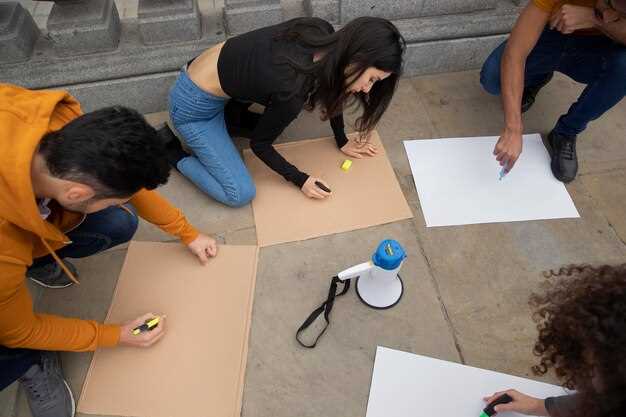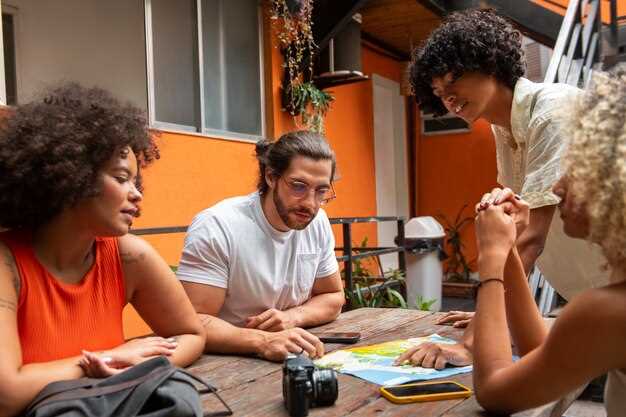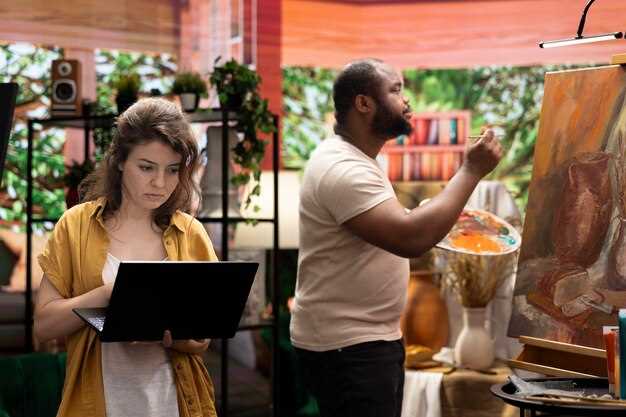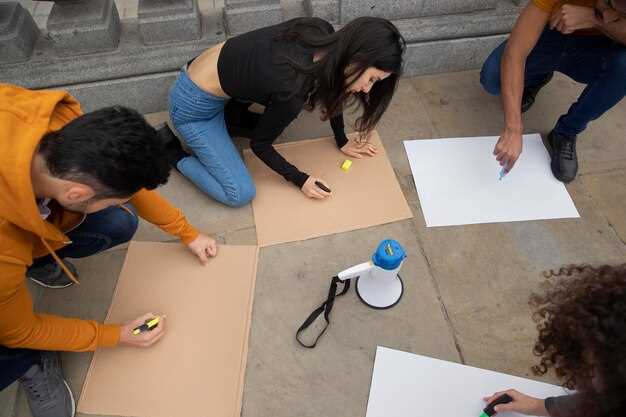For those looking to enhance Indigenous education, initiating community projects stands out as a powerful strategy. Engage local Indigenous leaders, educators, and students to directly address educational goals. Building strong relationships within the community lays the groundwork for meaningful collaboration.
Incorporate traditional knowledge and practices into the curriculum through workshops and interactive sessions led by Indigenous community members. This not only validates Indigenous perspectives but also enriches the educational experience for all participants. Consider organizing community events where students and elders come together to share stories, skills, and cultural traditions.
Utilize technology to facilitate collaborative learning. Create online platforms where students can connect with Indigenous mentors and access resources that reflect their heritage. This fosters an inclusive environment that encourages diverse learning styles and approaches.
Lastly, evaluate the outcomes of these initiatives regularly. Gather feedback from participants to refine the programs and ensure they meet the needs of the community. Celebrate successes and acknowledge challenges to promote continuous improvement in Indigenous education.
Community Projects in Indigenous Education

Launch initiatives that incorporate local languages into classroom activities. Organize workshops where community members teach traditional stories, legends, and skills, allowing students to connect directly with their heritage.
Set up mentorship programs pairing Indigenous elders with students. This allows knowledge transmission through personal stories and lived experiences, creating deeper relationships and understanding.
Utilize storytelling circles within the community. These gatherings can build trust and provide a safe space for sharing cultural narratives, encouraging students to express their identities.
- Encourage collaborative art projects that showcase Indigenous culture. Involve students in projects that beautify community spaces, enhancing their sense of belonging.
- Develop local science projects that study the environment through traditional ecological knowledge. Include hands-on activities that relate to local ecosystems and sustainability practices.
Implement programs that feature local ceremonies and events. Involve students in planning and executing these events, allowing them to engage with their culture actively.
- Partner with Indigenous organizations to create summer camps focused on cultural education and language immersion.
- Invite community members to lead workshops in topics like traditional medicine, crafts, and performance arts.
Encourage collaborative research projects that address local community issues, such as land management or health disparities. Engage students in meaningful inquiries that benefit the community.
Promote inter-school projects connecting different Indigenous groups. This fosters unity and appreciation of diverse traditions among students.
Adopt flexible curriculum strategies supporting local community needs and priorities. Collaborate with educators and community leaders to create responsive educational frameworks.
Understanding the Role of Collaborative Learning in Indigenous Contexts

Collaborative learning enhances engagement and ownership among Indigenous learners. Incorporating traditional knowledge with modern education practices creates a rich environment for exploration. Forming small groups encourages deep discussions, allowing participants to share diverse perspectives grounded in their experiences.
Facilitators should ensure that learning spaces respect Indigenous customs and practices. Integrating language and cultural elements strengthens the relevance of the material. It also helps build trust, as participants see their identities reflected in the curriculum.
Active participation is crucial. Encourage learners to bring stories and knowledge from their communities, fostering a sense of belonging. Using problem-based learning approaches enhances critical thinking, as groups tackle real-life challenges faced by Indigenous populations.
Providing opportunities for mentorship can also be beneficial. Pairing experienced community members with younger learners promotes knowledge transfer and builds local capacity. This interconnectedness reaffirms cultural ties and supports sustainable practices.
Assessment methods should align with collaborative efforts. Utilizing peer reviews and collective reflections acknowledges group achievements and individual contributions, reinforcing accountability. Recognizing success fosters motivation and encourages ongoing participation in community-driven projects.
To enhance collaborative learning, develop partnerships with local organizations. These connections can provide resources, expertise, and additional facilitators, enriching the educational experience. Active collaboration within communities amplifies impact and relevance, ensuring that the education reflects Indigenous values and aspirations.
Engaging Community Stakeholders in Educational Initiatives

Identify local leaders and organizations who can contribute to educational projects. Actively involve them in the planning phase, ensuring their insights shape the curriculum and program delivery. Establish regular meetings to discuss progress, gather feedback, and adjust strategies as needed.
Building Relationships
Forming strong connections with stakeholders encourages trust and collaboration. Host community events focused on education where stakeholders can discuss their perspectives. Utilize social media platforms to share updates and gather input, ensuring everyone feels represented in decision-making processes.
Resource Sharing
Develop partnerships to share resources, knowledge, and materials. Create a table outlining community contributions, including skills, tools, or venues available for educational initiatives. This transparency fosters a sense of ownership among stakeholders.
| Stakeholder | Contribution Type | Description |
|---|---|---|
| Local Schools | Curriculum Development | Collaborating on culturally relevant teaching materials. |
| Community Leaders | Mentorship | Providing guidance and support to students. |
| Nonprofit Organizations | Funding | Offering grants or resources for educational projects. |
Monitor and evaluate the collaboration, celebrating successes and addressing challenges through dialogue. This ongoing engagement strengthens community ties while enhancing educational outcomes for Indigenous learners.
Designing Hands-On Projects to Enhance Indigenous Knowledge
Integrate traditional practices into hands-on projects to create meaningful learning experiences. Start with gatherings that bring community members together to share their knowledge. Organize workshops where participants can learn about native plant identification, traditional hunting techniques, or weaving practices. Each session encourages participants to engage with local experts, ensuring the authentic transmission of knowledge.
Collaborative Crafting
Implement crafting projects that reflect indigenous art forms. Collaborate with artists to guide workshops on pottery, beadwork, or basket weaving. Allow participants to explore techniques while discussing the significance of each craft within their culture. Highlight the stories associated with the materials and designs. This combination of storytelling and creation strengthens cultural ties and fosters pride in heritage.
Cultural Gardens
Create community gardens featuring plants traditionally used by indigenous peoples. Involve learners in selecting plants based on their historical and medicinal uses. Organize planting days where participants work together while sharing their knowledge about cultivation practices. Periodic harvest festivals can reinforce communal bonds, celebrate successes, and encourage sharing of recipes and traditional cooking methods.
Utilizing Local Resources for Sustainable Community Education
Engage local elders as educators. Their experiences and wisdom provide invaluable lessons about cultural practices, environmental stewardship, and community values. Set up regular storytelling sessions where they can share traditional knowledge, creating a platform for intergenerational learning.
Incorporate native plants and local ecosystems into the curriculum. Develop hands-on workshops that focus on traditional ecological knowledge. Activities like foraging, planting, and crafting can deepen students’ connection to their heritage and promote environmental sustainability.
Leverage community spaces such as local parks, rivers, and cultural centers. These venues can serve as outdoor classrooms, facilitating experiential learning about local history, ecology, and art. Organize field trips to these sites, allowing students to interact with their surroundings in meaningful ways.
Collaborate with local artisans and craftsmen. Invite them to conduct workshops on traditional skills such as weaving, pottery, or carving. This not only enhances students’ skills but also supports local economies and keeps cultural practices alive.
Utilize technology for resource sharing. Create a community portal where teachers, parents, and local experts can share educational materials, event schedules, and project ideas. A centralized digital space fosters collaboration and encourages ongoing dialogue among community members.
Incorporate local food systems into education. Partner with local farmers to create programs around sustainable agriculture. School gardens can teach students about nutrition, ecological practices, and self-sufficiency while providing fresh produce to the community.
Encourage youth-led initiatives. Empower students to identify local challenges and develop solutions through projects that reflect community needs. This not only enhances leadership skills but also strengthens community ties and ensures that education remains relevant.
Evaluate the projects regularly with feedback from the community. This assessment will help adjust approaches and ensure that educational practices remain aligned with local values and resources, fostering a sustainable framework for learning.
Measuring the Impact of Community Participation on Student Outcomes
Engaging community members actively enhances student performance. Programs that incorporate local knowledge and participation lead to improved academic metrics. Here are key strategies to measure this impact:
- Collect Quantitative Data:
- Track attendance rates before and after community involvement.
- Analyze standardized test scores to identify improvements in student learning.
- Monitor graduation rates and dropout statistics.
- Gather Qualitative Feedback:
- Conduct interviews with students and parents to understand their experiences.
- Use surveys to assess perceptions of educational value from community projects.
- Organize focus groups to discuss the social skills developed through community collaboration.
- Evaluate Student Engagement:
- Observe classroom interactions and participation levels during collaborative activities.
- Assess student motivation through self-reported interest in learning.
- Measure involvement in extracurricular activities linked to community projects.
- Assess Long-Term Outcomes:
- Track alumni success in college and career paths influenced by community education.
- Evaluate ongoing relationships between former students and community organizations.
- Analyze the long-term cultural knowledge retention among participants.
Regularly review these metrics to adapt and refine community engagement strategies. Building strong partnerships fosters meaningful relationships that translate into substantial educational improvements for Indigenous students.
Creating Intergenerational Learning Opportunities within Indigenous Communities
Encourage collaboration between elders and youth through structured storytelling sessions. These gatherings not only pass down knowledge but also create bonds. Each generation shares experiences and wisdom, enriching cultural understanding.
Incorporate traditional crafts into workshops. Invite older community members to teach skills like weaving, pottery, or beadwork. This hands-on approach builds connections and ensures techniques are preserved for future generations.
Utilize local natural resources for outdoor learning experiences. Organize guided nature walks led by elders, who can explain the significance of various plants and animals. These excursions not only teach environmental stewardship but also highlight traditional ecological knowledge.
Create mentorship programs that connect youth with elders based on shared interests. Set up regular meetings where participants can discuss topics like language, history, or environmental practices. This creates a community of support and resource sharing.
| Activity | Benefits |
|---|---|
| Storytelling sessions | Strengthen cultural ties, enhance communication skills |
| Traditional crafts workshops | Preserve cultural practices, promote teamwork |
| Nature walks with elders | Teach ecological knowledge, foster a love for nature |
| Mentorship programs | Support personal growth, create lasting relationships |
Incorporate technology responsibly. Create platforms where stories and lessons learned can be shared digitally, allowing wider access while respecting traditional privacy. This approach combines modern communication with indigenous knowledge.
Regularly evaluate intergenerational programs through feedback sessions. Open discussions help identify areas for improvement and ensure that the needs of both elders and youth are met effectively.
Developing Partnerships Between Schools and Indigenous Organizations
Establish mutual respect by engaging Indigenous leaders in meaningful conversations about the unique needs and perspectives of their communities. Host informal gatherings where educators and Indigenous representatives can share stories, cultural practices, and educational goals. This approach builds trust and lays the groundwork for collaboration.
Implement joint professional development programs, focusing on culturally responsive teaching methods. Training sessions should incorporate Indigenous perspectives, ensuring that educators feel equipped to integrate these teachings into their classrooms. This shared learning experience enhances educators’ understanding and appreciation of Indigenous cultures.
Create mentorship programs that connect students with Indigenous elders and community members. These mentors can provide real-world insights and traditional knowledge, helping students to bridge the gap between academic learning and cultural heritage. This initiative promotes a sense of identity and belonging among Indigenous students.
Support co-developing curriculum resources with Indigenous organizations. This collaboration ensures that materials reflect accurate histories, languages, and values of Indigenous peoples. Engaging local knowledge keepers in this process enriches student learning and validates Indigenous perspectives.
Encourage community projects that involve students in local initiatives, such as land restoration or traditional craft workshops. These projects foster hands-on learning and demonstrate the importance of sustainability and stewardship in Indigenous cultures, while also allowing students to contribute positively to their communities.
Incorporate regular feedback loops from Indigenous partners to assess the effectiveness of programs and curricula. This feedback should guide improvements and adaptations, ensuring that partnership efforts remain relevant and impactful. Celebrate successes together, recognizing the contributions of both schools and Indigenous organizations in these collaborative efforts.
Promoting Culturally Relevant Curriculum through Community Input
Incorporate community voices by establishing regular forums where Indigenous families and community leaders can share insights and expectations for curriculum development. These forums should prioritize open dialogue and respect for cultural perspectives to ensure the curriculum reflects community values.
Utilize surveys to gain broader input regarding specific cultural elements that parents wish to see integrated into the curriculum. Focus on areas such as local history, traditional practices, and Indigenous languages. This data can help educators understand the community’s priorities and adapt teaching methods accordingly.
- Collaborate with local Elders: Invite community Elders to contribute their knowledge, providing students with firsthand experiences of cultural practices and traditions.
- Engage with local organizations: Partner with Indigenous cultural organizations to co-create educational materials that accurately reflect community heritage.
- Encourage student participation: Allow students to research and present on topics relevant to their culture, giving them a stake in their learning process.
Design professional development for educators that includes workshops on Indigenous history and pedagogy. These sessions should highlight the impact of culturally relevant teaching and provide strategies for implementing these concepts in the classroom.
Evaluate curricula regularly by seeking community feedback. This ensures that the material remains relevant and resonates with the community over time. Create a feedback loop that encourages continuous improvement and community involvement.
Leverage technology to share resources and success stories across communities. This can foster a network of support, providing educators with innovative ideas and practices from other Indigenous communities that successfully navigate similar challenges.
Document and celebrate successes within the community. Highlight programs or lessons that effectively integrate community input, showcasing their impact on student engagement and academic performance. This recognition can inspire ongoing collaboration and enthusiasm for culturally relevant education.
Challenges and Solutions in Implementing Community-Based Education Projects
Engaging local communities is key for the success of education projects tailored for Indigenous populations. To address challenges, create strong relationships with community leaders and members. Regular feedback sessions ensure that the project aligns with their needs and cultural values.
Cultural Appropriation and Sensitivity
Respect cultural values is non-negotiable. Collaborate closely with community elders when developing curriculum materials. Incorporate local languages and traditions to create a sense of ownership among participants, promoting a deeper engagement with the educational content.
Resource Availability
Access to adequate funding and materials can be a hurdle. Actively seek partnerships with NGOs and government programs to secure resources. Additionally, leverage local skills and knowledge by involving community members as facilitators and educators, ensuring both sustainability and relevance of the projects.
Case Studies of Successful Indigenous Education Projects
One effective approach involves the “Elders Teach” initiative in Australia, where Indigenous elders partner with schools to share traditional knowledge. This program enhances students’ understanding of cultural practices while creating meaningful connections between generations. Schools report improved student engagement and a greater appreciation for Indigenous heritage.
Indigenous Language Revitalization
The “Kanyini” project in South Australia focuses on the revitalization of the Pitjantjatjara language among local youth. Through language camps and community workshops, participants learn language skills alongside cultural traditions. This initiative has successfully led to a marked increase in youth speaking their native language, fostering pride and identity within the community.
Environmental Stewardship Programs
The “Sustainable Indigenous Communities” program highlights a collaborative partnership between Indigenous groups and environmental organizations in Canada. Participants engage in land reclamation projects while learning about traditional ecological knowledge. This initiative not only promotes environmental sustainability but also reinforces the importance of Indigenous perspectives on land management.
Schools interested in similar projects should focus on building partnerships with local Indigenous communities. Actively seeking input from community leaders ensures cultural relevance and support. Establishing regular workshops creates ongoing opportunities for learning and sharing. By investing time in these partnerships, educational institutions cultivate an inclusive environment that honors Indigenous knowledge and traditions.
Video:
How Can Collaborative Storytelling Projects Involve Indigenous Knowledge Holders?
How Can Collaborative Storytelling Projects Involve Indigenous Knowledge Holders? by Polar Regions Uncovered 2 views 1 month ago 4 minutes, 1 second
Q&A:
What role do community projects play in Indigenous education?
Community projects serve as a bridge between traditional Indigenous knowledge and formal education systems. They empower Indigenous students by involving their communities in the learning process. This engagement fosters cultural pride and personal investment in education as Indigenous elders, leaders, and families collaborate with schools to create relevant learning experiences.
How can collaborative learning enhance the educational experience of Indigenous students?
Collaborative learning encourages students to work together and learn from one another, promoting teamwork and communication skills. For Indigenous students, this approach values collective knowledge, often mirroring traditional ways of learning. Engaging with peers and community members can provide richer insights and a deeper understanding of cultural contexts, which enhances their overall educational experience.
Can you provide examples of successful community projects in Indigenous education?
One notable example is the “Elders in the Classroom” initiative, where Indigenous elders visit schools to share stories and cultural teachings. Another project is the “Land-based Learning” programs that take students into their traditional territories, connecting them with their heritage while teaching science and environmental stewardship. Both projects have been shown to improve student engagement and cultural understanding.
What challenges do community projects face in Indigenous education?
Challenges often include lack of funding, insufficient support from educational institutions, and the need for more trained personnel who understand Indigenous cultures. Additionally, there can be resistance to integrating community projects into existing curriculums from educators unfamiliar with Indigenous perspectives. Addressing these challenges requires collaboration between schools, communities, and policymakers to prioritize culturally relevant education.
How can schools better collaborate with Indigenous communities for educational projects?
Schools can initiate partnerships by reaching out to Indigenous leaders and organizations, involving them in the design and implementation of educational programs. Building relationships based on trust and mutual respect is crucial. Regular meetings, joint planning sessions, and community events can help create a dialogue that aligns educational goals with the needs and values of Indigenous communities.
What are some examples of community projects in indigenous education?
Community projects in indigenous education can include culturally relevant curriculum development, language revitalization initiatives, and mentorship programs that connect youth with elders. For instance, a project might focus on teaching traditional stories and practices through workshops led by community members. Others might involve building partnerships with local schools to integrate indigenous perspectives into science or history classes, promoting respect and understanding of indigenous cultures.
